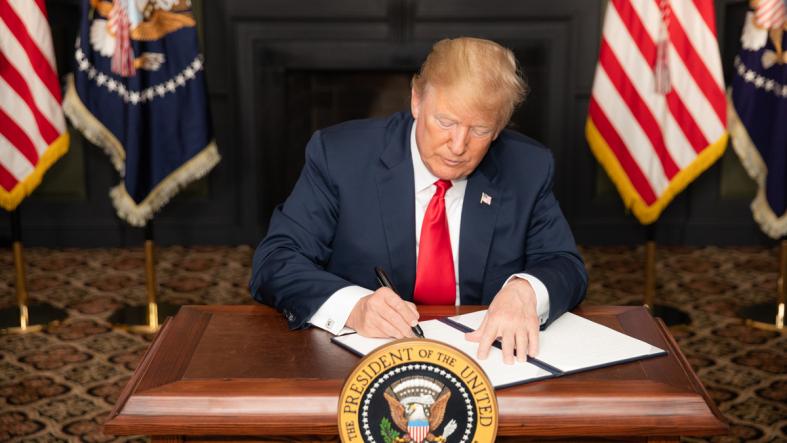Critics say the executive order was drafted by Stephen Miller, the White House adviser behind some of the administration’s most controversial immigration policies.
On Wednesday, President Donald Trump signed an executive order temporarily restricting immigration into the United States.
Trump said the decision, which will remain active for 60 days, is meant to protect American workers from novel coronavirus. Despite facing heavy criticism, Trump said he may extend the order if he feels it warranted.
“In order to protect our great American workers, I have just signed an executive order temporarily suspending immigration into the United States,” Trump said at a White House conference on Wednesday. “This will ensure that unemployed Americans of all backgrounds will be the first in line for jobs as our economy reopens.”
President Trump also suggested that his order will “preserve our healthcare resources for American patients” affected by COVID-19.

“We have to take care of our patients, and we have to take care of our great American workers,” Trump said. “And that’s what we’re doing.”
CNN notes that the order isn’t all-encompassing. It does not, for instance, affect U.S. permanent residents or H1B visa holders. Rather, it restricts the issuance of visas to people who are currently outside the U.S.
According to The Migration Policy Institute, a non-partisan organization, Trump’s order may block close to 52,000 green cards for the 60 days it’s expected to remain in effect.
However—and as CNN reports—migration into the United States has largely been at a standstill. With coronavirus continuing to spread around the world, many countries have essentially sealed their borders. India—whose nationals account for about 70% of all H1B visas issued annually—has a country-wide shelter-in-place order which won’t expire until early May. Until then, international passenger flights have been all but blocked. In a recent statement, Air India, for instance, said it won’t resume international services until June.
The order doesn’t apply to the spouses of minor children of U.S. citizens, nor does it affect health care professionals and members of the Armed Forces. Other exemptions are in place, too, for investors, and foreign nationals who have worked for the federal government in Iraq and Afghanistan.
But some sources say Trump’s executive order isn’t just about protecting the nation amidst novel coronavirus. One White House aide told al-Jazeera that the president’s been discussing curbing immigration for days.
“He’s wanted this all along,” the person said. “But now under this pandemic he can absolutely do it.”
NBC News says that White House adviser Stephen Miller was behind the executive order’s first several drafts. And it’s Miller who’s has been behind some of the Trump administration’s most controversial policies, including the separation of migrant children from their parents.
Early Thursday morning, Miller—attempting to deflect criticism on a group phone call—framed the executive order as an undoubtedly patriotic maneuver. He also pre-emptively blamed Democrats for being unsupportive.
“We all need to be out there publicly promoting this vital action, and emphasizing that we have a president that stands with American workers and we have a political opposition in this country that does not,” Miller said, according to a call participant.
Miller also allegedly suggested that the executive order was necessary not to protect American workers from coronavirus, but to curb immigration overall.
“The most important thing is to turn off the faucet of new immigrant labor,” Miller said. “Mission accomplished with signing that executive order.”
Sources
How Trump got his immigration ban in under 48 hours


Join the conversation!